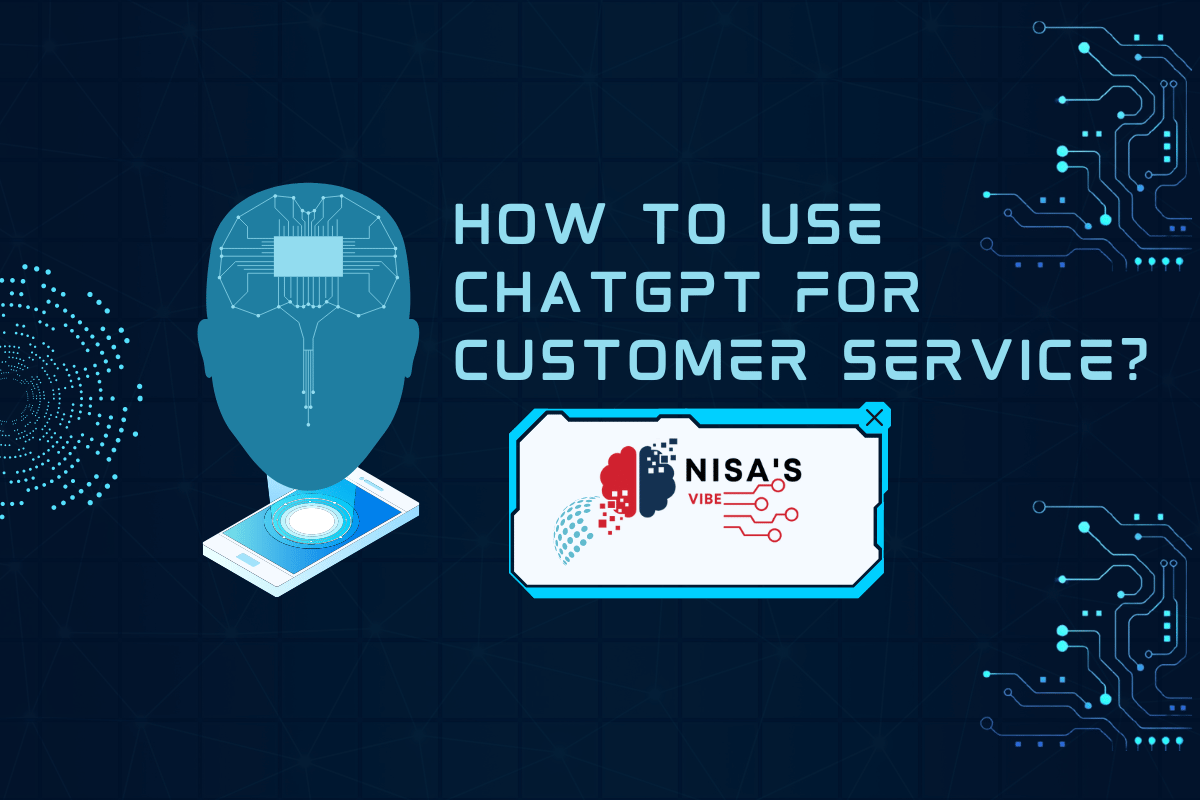Hi, I’m Nisa! In 2025, the world of customer service is evolving, and businesses that embrace AI-driven solutions like ChatGPT are gaining a competitive edge. As an entrepreneur and digital marketer, I’ve seen firsthand how the right tools can streamline operations and significantly enhance the customer experience. ChatGPT, developed by OpenAI, is one of the most advanced technologies available to improve customer support, enabling businesses to offer instant responses, 24/7 service, and consistent communication.
In this article, I’ll guide you through proven ways to use ChatGPT for customer service, improving both operational efficiency and customer satisfaction.
1. Automating Customer Support with ChatGPT
One of the most effective ways to use ChatGPT for customer service is to automate routine tasks and basic customer inquiries. By integrating ChatGPT, businesses can handle repetitive tasks quickly, allowing customer service agents to focus on more complex issues.
How it works:
- Integration with support channels: ChatGPT can be integrated into live chat systems on your website, mobile apps, and social media accounts like Facebook Messenger or WhatsApp. This allows customers to engage with the AI and get answers instantly.
- Responding to FAQs: ChatGPT can answer a wide range of common questions, including inquiries about your products, services, shipping times, return policies, and more. It can be trained on your knowledge base to deliver accurate and relevant responses.
- 24/7 availability: With ChatGPT, your business can provide around-the-clock support, ensuring that customers never feel neglected, even after hours or during busy periods.
Example: If you own an e-commerce store like mine, Nisa’s Perfect Prints, customers might frequently ask questions about order statuses, return policies, or customization options. Instead of waiting for a human representative, they can get immediate answers from ChatGPT, improving their experience.
2. Enhancing Personalized Customer Interactions
While automation is essential, ChatGPT can also help deliver personalized customer experiences. By using historical data and tailoring responses based on customer behavior, ChatGPT can create an experience that feels personal and attentive.
How it works:
- Customer context: By integrating ChatGPT with your CRM or support tools, the chatbot can remember past interactions and refer to previous purchases, making conversations more relevant. For example, if a customer has asked about a specific product in the past, ChatGPT can follow up with updated information about the product when they reach out again.
- Dynamic recommendations: If you run an online store, ChatGPT can recommend products based on a customer’s browsing history or past purchases, helping increase conversions.
Example: Let’s say a customer, Sarah, previously asked about personalized greeting cards for a wedding. The next time Sarah contacts your customer service, ChatGPT can greet her with: “Hi Sarah, I noticed you were interested in our wedding card designs. Can I help you find the perfect design for your special day?”
3. Reducing Response Time and Improving Efficiency
ChatGPT excels at handling a high volume of customer inquiries, which is crucial for businesses looking to scale. It can respond in seconds, drastically reducing wait times and improving overall customer satisfaction.
How it works:
- Instant response: ChatGPT can answer inquiries immediately, removing the delays caused by waiting for a human agent to become available. This is especially useful during peak times, such as holiday seasons or product launches.
- Escalation to human agents: While ChatGPT can handle basic inquiries, it’s also capable of escalating complex issues to a human representative when necessary. The AI can assess whether a customer’s request requires more in-depth assistance and transfer the conversation seamlessly.
Example: If a customer contacts your business asking for technical support, ChatGPT can handle basic troubleshooting steps (e.g., “Have you tried restarting your device?”), and if the issue persists, it can escalate the conversation to a live agent.
4. Streamlining Order Management and Tracking
For businesses that deal with orders and shipments, ChatGPT can provide real-time updates and help customers track their purchases without having to contact customer support directly.
How it works:
- Order tracking integration: ChatGPT can be integrated with your order management system to provide customers with updates about their order status, shipping details, and estimated delivery times.
- Notifications and alerts: If there are any delays or issues with an order, ChatGPT can send proactive messages to customers, keeping them informed and reducing the need for them to reach out for updates.
Example: Imagine a customer named John who wants to track his recent order. ChatGPT can instantly provide John with his order number and shipping status, saving time for both the customer and your team.
5. Collecting Customer Feedback and Insights
Feedback is crucial for any business looking to improve its products or services. ChatGPT can help collect valuable insights by engaging with customers after their interaction or purchase.
How it works:
- Surveys and feedback: After resolving a customer query, ChatGPT can ask customers to rate their experience, providing valuable data on how your customer service team is performing.
- Analyzing customer sentiment: By using natural language processing (NLP), ChatGPT can analyze customer conversations to detect sentiment, identifying unhappy customers or recurring issues that need attention.
Example: After assisting a customer, ChatGPT can ask, “Was this answer helpful? Please rate your experience on a scale of 1-5.” This feedback helps you make continuous improvements to your customer service process.
6. Integrating with Multiple Channels for Seamless Support
In 2025, customers expect businesses to be available across various platforms, including websites, social media, and mobile apps. ChatGPT can be integrated with multiple channels, ensuring consistent and seamless support across touchpoints.
How it works:
- Omnichannel integration: Whether customers reach out through your website chat, Facebook Messenger, or WhatsApp, ChatGPT can provide a consistent support experience across all platforms.
- Centralized communication: ChatGPT can centralize conversations, allowing your support team to view all interactions in one place, making it easier to follow up and resolve issues efficiently.
Example: If a customer reaches out on Facebook Messenger with a question about a product and later emails you for the same issue, ChatGPT can continue the conversation seamlessly across platforms, ensuring no information is lost.
Transforming Customer Service with ChatGPT
Incorporating ChatGPT for customer service in 2025 can significantly enhance your business’s ability to provide instant, personalized, and efficient support. Whether you’re automating FAQs, offering 24/7 support, or gathering valuable customer feedback, ChatGPT is a game-changing tool for businesses of all sizes.
By integrating AI-driven customer service, you’ll not only reduce response times and increase customer satisfaction but also free up your human agents to focus on more complex tasks, ultimately driving business growth.



